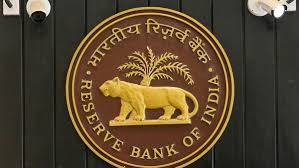Mumbai: The Bimal Jalan committee report, which is delayed, will lead to transfer of under Rs3 lakh crore of excess capital from the Reserve Bank to the government, which will most likely use the money for meeting regular expenses, says a report.
The money will come in over three years and is most likely used for regular government spending, Japanese brokerage Nomura said in report Tuesday.
The Bimal Jalan committee on the appropriate economic capital framework for RBI was formed last December, and has sought a third extension to present its report which will now be next month.
“Market expectations suggest Rs 3 lakh crore (will be) distributed staggered over years, though we believe the ultimate transfer will be lower,” the brokerage said.
It said there is a 45 percent probability for the money to be used for regular government spending and only 20 percent chance that it will be used for bank recapitalisation.
Recouping state-run banks’ capital buffers which have taken a beating due to the dud asset recognition is one of the most talked about uses for the excess RBI capital and is also backed for former chief economic advisor Arvind Subramaniam.
Nomura gave a higher, 25 percent probability for the money to be used for retiring public debt with the RBI, and a 10 percent probability of no immediate transfer at all.
“The evaluation of ‘excess’ depends on the choice of stress-testing, and ranges from the RBI being under- capitalised to an excess as high as Rs 4.5 lakh crore,” it said, speaking about the ways of computing.
It, however, said those expecting a large fiscal windfall of Rs 3 lakh crore are “at a risk of being disappointed”.
Other members of the Jalan panel include Rakesh Mohan, former deputy governor as the vice-chairman, finance secretary Subhash Chandra Garg, deputy governor NS Vishwanathan, and two RBI board members – Bharat Doshi and Sudhir Mankad.
The panel is entrusted with the task of reviewing the best practices followed by central banks worldwide in making assessment and provisions for risks.
The government and the RBI during the tenure of previous governor Urjit Patel had been at loggerheads over the surplus capital with the central bank, and formation of the panel was among the first major decision taken by Patel’s successor Shaktikanta Das.
The finance ministry was of the view that the buffer of 28 percent of gross assets maintained by the central bank is well above the global norm of around 14 percent.
In the past, the issue of the ideal size of the RBI reserves was examined by three committees—V Subrahmanyam in 1997, Usha Thorat in 2004 and YH Malegam in 2013. But none of them called for paring the same from the then existing levels.

